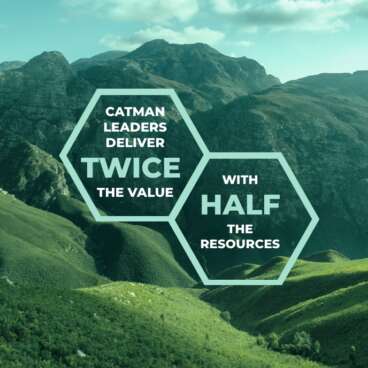
Case study • Home Office
Home Office – Using category management to position Commercial as a strategic leader
By Future Purchasing |


Sam Ulyatt
Chief Commercial Officer, UK Home Office
With an annual UK public sector spend of £6.4 billion, The Home Office has a responsibility to manage public money and resources using best business practices. The standards expected are demanding.
Sam Ulyatt, its Chief Commercial Officer, explains why she believes a category management approach is essential to deliver to those standards.
“At present,” Sam says, “each Director General has responsibility for a budget or part thereof, which means spending can be carried out in isolation, and that means that various budget holders could be going to market for the same product or service at very similar times, but with very different prices. So, my vision for the Department is twofold:
- Firstly, I’d like to join up how we use that spend, how we present ourselves to market, how we all understand our categories and the impact they have on the marketplace, and on ourselves.
- Secondly, I’d like to instil a culture, mindset and way of working that complements and supports the government’s commercial drivers and outcomes.”
“And my ultimate desire would be to do this across all of government.”
Where category management fits in
Sam is aware of what needs to change in order for Commercial to be positioned as a directorate of strategic leaders – a transition is required to effect the vision. “With this amount of annual spend,” she says, “we need to, and should, have a much louder voice around the table. We aim to achieve that by looking strategically at how our operations are carried out, including those by contractors, and working more closely and strategically with our suppliers and the businesses to help shape their strategies. Category management is a big part of that agenda.”
At the very heart of this, for Sam, is both the capacity and the capability of the people doing their jobs, and of the procurement profession generally. “My observations over the years are that many people spend their time operating the mechanics of procurement, being transactional, and my aim is to get that time and resource back by operating more efficiently – by employing category management. I believe a category management approach will massively drive benefits for the business and for the people within it.”
While a commercial team by nature has lots of expertise in procurement regulation and legislation, it’s essential for them to understand their markets just as well. And a conjoined approach alongside technology, Sam believes, can help them to be more streamlined, quicker, and to think more strategically.
“I think the implementation of category management is really a natural progression towards this vision – it’s not new, it’s something that’s been around for a very long time.”
As a leader, Sam can see ahead to what ‘good looks like.’ She’s seen the movie before. She successfully implemented category management at Crown Commercial Service, and is now busy getting her team on board to do the same.
Getting over the fear-of-the-unknown hurdle
“Naturally, there’s a lot of frightened people,” Sam explains, “because being strategic means leaving the comfort zone of how we’ve always done things. So we need to lead a cultural change in the way we engage with our markets, and we will be automating a significant amount of what we do. But that doesn’t mean less people – a myth that must be dispelled – it means people with augmented skill sets.
“Yet this is where we encounter some resistance, not just in the commercial teams, but in the business teams as well, because it means change. The change is not just about the principles of category management, it’s about people too.
“How we conquer the fear element is a million-dollar question. And it revolves around time and readiness. We need to support and enable people on this journey and work alongside them, as with all change, this can bring positive and negative thoughts.”
How do you achieve readiness?
“A leader needs to have earned respect and trust,” Sam says. “You cannot come into a change management role with a list of to-do’s and demands. That results in chaos.
“You must be aware that people fear change, even if they won’t articulate it – they show it in their resistance. But they will follow you if they believe it is the right thing to do – the right direction. And it’s the leader’s job to communicate that, to help them understand that in fact strategic thinking about how you are going to deliver something, and avoid any problems along the way, is more productive than the transactional box checking and button pressing. A non-strategic approach is massively costly and doesn’t reap the benefits we could be getting from our suppliers.
“On that point – also educating some of the supplies on the benefits of strategic working is another hurdle … but that’s another story.
“The other challenge is getting all of the leaders in that space. How you gain their trust is through stability and consistency in your messaging. You need to stay firm that this is not a passing change but a need to continually improve. The key is, you take everyone along with you. It’s important to listen to concerns, but also to deal with them, move on and get to a stage where you are ready for your CatMan journey.” So you need resilient leaders among your ambassadors, and a strong collective leadership message.
And this is where training comes in …
“It does take a lot of coaching,” says Sam. “We are ‘on the change curve’ at the moment, so it’s not going to be easy. Changing the hearts and minds of people is hard, so stakeholder management is important. If change management is a degree-level skill in the private sector, it’s a Ph.D. in the public sector. It takes perseverance, it takes resilience, and it takes training. And I think where other attempts at CatMan have failed, it’s because they haven’t put enough focus on those points.”

The CatMan structure and organisation
How Sam intends to organise the CatMan approach is another big part of the ‘readiness’ equation. “We have a portfolio of big projects,” Sam explains. “Some impact external spend, so you could categorise them horizontally across all programmes.
“The way we are structured at the moment is with a DDaT, commercial and operations director, and I will soon be hiring a strategic category director too. That shows the seriousness of our intentions. It’s a really important leadership role because that person will be the change catalyst. And because, for example, about 45% of spend is on DDaT, I’m going to have a business partner in our strategic category team who will deal with that business and own it end to end, including the customer part. And it’s my job to make sure that person is a true business partner who will own business problems and keep them until they are solved.”
Sam aims to turn the Target Operating Model completely on its head, and actually change that role. “So we’ll have people with strategic categories, the specialists, for example in professional services. And operationally there will be the business partner team as the front door. But the engine behind all of that will be strategic category management.
“I see the strategic team being focused on strategy and the operational team underneath connecting well in the delivery of non-category spend alongside contract management. And we are working on a strategic category view. Lessons learned from doing this previously tell me that you have to keep a strong grip on the category and drive it – it doesn’t just happen. You have to turn it into best practice then mirror that across categories. But the two must stay linked.
“My big question at the moment is: do we have dedicated people or do we have a pool of specialists that work horizontally? Whichever, you need a workforce management process to allow that, to move away from only controlling what’s in your direct line – another shift that must be managed.
“What our structure will look like is still in the making, but it will happen, and across categories there will be holistic buying with category management touching every part of it.”
Ultimately, what does good look like?
For Sam, category management will bring not just a commercial, but a multi-disciplinary skill set. “My vision is that we can all sit around a virtual table, discussing and understanding market movements and delivering to a common goal. So that is what good typically looks like to me.
“It will require project management to bring everyone on board, and fortunately within The Home Office we do have that skill, and we have the right people to help drive this, where category strategies can align with delivering wider goals. For example, we have a two-year rolling plan that leads to a 2030 vision for Commercial and how category management fits within that.
“Above all, we must have a plan for whatever our government is going to be facing – no one knows what the future holds. But we do know that if we concentrate on the right strategy, tools and skillsets we can build the stability that will gear us up for whatever ministerial priorities the future brings.”

This case study is taken from
“Influence the Future” – The 2024 Global Category Management Report
Equip yourself with the knowledge and tools needed for tomorrow’s challenges.
- Strategic Focus: Gain insights into top practices that drive improvements.
- Value Delivery: See how leaders maximise value beyond expectations.
- Team Efficiency: Deliver twice the value, with half the resources.
- Industry Benchmarking: Assess how you measure up to industry standards.
- Expert Knowledge: Extract actionable advice from leading global case studies.
Related Expertise
Supplier management
Our supplier management approach combines excellent tools and techniques across the full range of activity, from segmentation, through performance measurement and improvement and through to relationship strategy development.
Category management
Excellence in Category Management gives multipliers of value delivery compared to less effective programs. Our approach, delivers a high performing team and process which provides sustainable value over years rather than months.
negotiating for procurement
Our approach to procurement negotiation helps teams to improve performance, track their progress, measure success and secure rapid payback to programme costs. It is based on four principles…

Future Purchasing
If you want to get more value out of your procurement spend, or you just want to know more about us, request a callback above or send us an email and we will come straight back to you.
Further Reading

Webinar
A Meeting of Minds Webinar
18/07/2024
Watch

Case study
NHS
Category Management: The golden thread running through NHS spend collaboration
30/04/2024
Read More

Case study
AstraZeneca
At AstraZeneca the foundations of category management are built on stakeholder engagement
07/11/2023
Read More

